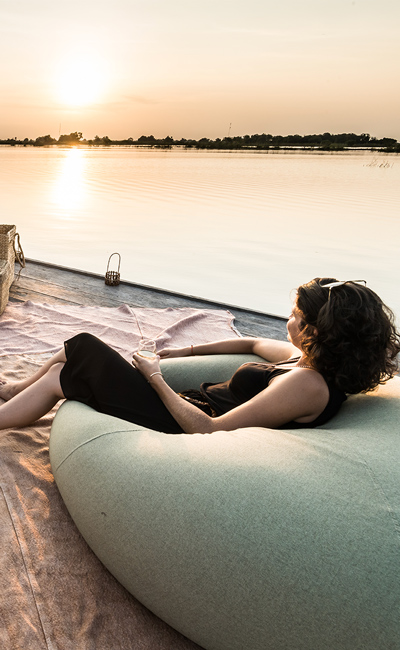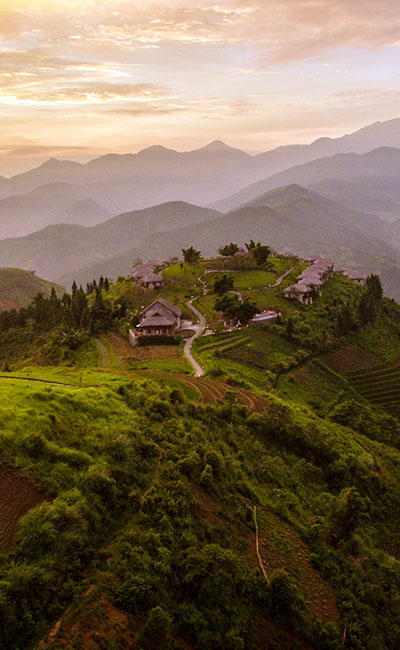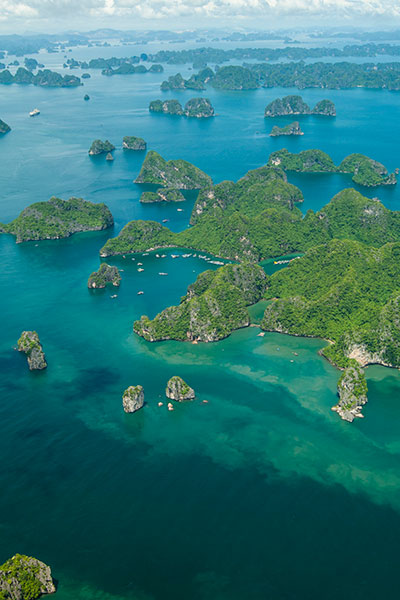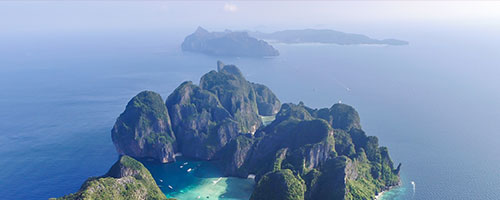The new year ushers in new trends and perspectives on travel. We’ve scoured the web, from Forbes, Condé Nast Traveler, the ABTA Travel Trends Report for 2020, to Elle Magazine and smaller travel blogs, to see what’s expected for the big year ahead. With our own predictions and advice, we’ve come up with a list of trends we think will develop or continue to grow in 2020.
Undertourism
Geologically speaking, our destinations remain the same size, but the same doesn’t always apply to populations and tourist numbers. That often means overcrowding, destination saturation, and ultimately, traveler dissatisfaction. Travelers are increasingly in search of that notorious term “off the beaten track”, preferring to venture to yet-to-be-explored destinations, or travel during low-seasons. It’s become a whole lot cooler to go where most people don’t. What “undertourism” will include:
Slowing things down
Contiki tours and the like popularized the idea of seeing as much as possible in an intimidatingly short amount of time. And for many people, the thought of visiting just one place in an entire country spells forfeiting the joys of discovering another. But, as many travelers have begun to realize, rushing is never much fun. More of our partners are beginning to request longer destination-stays for their travelers, and while not always in one location, at least with the intention to really take their time exploring 2 or 3 (or more) different places. The Isaan region in Thailand is one such destination that lends itself perfectly to slow travel, with an exceptionally peaceful pace of life at a more than comfortable distance from cities and towns. And our Floating House Experiences at Ma Maison Flottante on Cambodia’s quiet Tonle Sap, make for a uniquely tranquil escape.
Second city travel

The powerful Tad Fane Waterfall in Laos’ Bolaven Plateau.
Second city travel moves travelers away from the most visited city (or cities) and overtouristed destinations of a country, to a second, lesser-known and often smaller, city or region.
The chosen second-destinations for Southeast Asia?
Vietnam: Biologically-rich Phong Nha-Ke Be National Park or the once-in-a-lifetime Ha Giang Loop instead of popular Sapa, stunning Con Dao Island over Phu Quoc, and the Mekong Delta in place of a city-visit to Ho Chi Minh City.
Cambodia: Sleepy Kep and its famous crab market, and beautiful sunset cruises on Preaek Tuek Chhu River in laid-back riverside town Kampot, instead of Phnom Penh.
Myanmar: Hpa An in place of busy Yangon, the Andaman Sea (Mergui Archipelago, Dawei) in favor of Bay of Bengal (Ngwe Saung, Ngapali), Sagar or surrounding Loikaw as an alternative to Inle Lake.
Laos: The wonderful thing about Laos is that it has yet to experience over-tourism. The off-road paths of the Bolaven Plateau or hidden Hinboun are excellent choices for adventurous travelers, as well as Nam Et Phou Louey, home to the last of Laos’ wild tigers, or Vieng Xai and its expansive cave network.
Thailand: Quaint and temple-bespeckled Nan over Chiang Mai, and the much quieter white beaches of Rayong over Phuket.
Low-impact travel

Akha women wait around a fire before commencing an age-old, traditional dance. An introduction to the culture is a perfect example of low-impact, community-based tourism.
It’s not new, but the year ahead will see an ever greater surge in this type of travel. The terms “eco-friendly”, “sustainable”, “responsible” and “carbon neutral” aren’t fad buzzwords, but part of a conscious movement in the travel industry to mitigate climate change. That means greater demand for:
- Active holidays which predominantly include hiking, cycling, kayaking, etc. itineraries
- Eco-accommodations
- Train travel
- Biodegradable travel products
- Community-based tourism (CBT)
Government in Thailand, for example, is doing its part by encouraging CBT, and here in the North, our sister DMC, Easia Active, has designed an exceptional immersive experience with the Akha culture. And why not encourage your travelers to take the train from Hanoi to Sapa, or Ho Chi Minh City? Or invite them to venture into the jungles at Cardamom Tented Camp, which aids and benefits the Wildlife Alliance.
Travel to learn

A recycling workshop taught by local women in Siem Reap at social enterprise, Rehash Trash.
“Learn something new”. That may seem like a given when visiting a country for the first time, but lazing about on deck chairs at a resort pool rarely achieves that goal. As travelers have become more aware of their actions and influence, we’ve seen greater interest in immersive cultural experiences. Instead of focusing a trip to Siem Reap on Angkor Wat, for example, travelers take time to discover how people here really live, participating in rice wine or noodle making. Here they can observe the painstaking rice farming process, or listen to the stories of local disadvantaged women earning an income through social enterprise, Rehash Trash.
Experiential accommodation

Simple accommodations welcome travelers in the home of a family in Northern Thailand.
Gone are the days where travelers were only concerned about the comforts of a bed and the amenities in a room. Travelers are in search of genuine warmth and a welcoming environment when they choose where to rest their head. For us, that means we see increasing requests for laid-back homestays or immersive itineraries during which travelers stay with local families. Here accommodation incorporates experiences, from participating in vegetable gardening and cooking, to creating local crafts or having dinner chats with their host family.
B-Leisure
Big-name cities like Bangkok and Ho Chi Minh City draw a lot of business travelers. In the past, that’s meant a week-long trip, or even shorter. While business trips still don’t regularly turn into vacations, the busy jet-setters of the world are choosing to take some time off to get to know the place where they’re doing business. B-Leisure (business-leisure) is the new alternative, with travelers taking a couple of hours during the day, where possible, to explore city temples, enjoy spa facilities, check out the latest shopping options, or even venture further into the countryside (time permitting).
Country coupling

Myanmar’s coastal paradise: a woman stand up paddleboards along the calm waters of the Mergui Archipelago.
The beauty of Southeast Asia is that everything is pretty close together, and travel is more than affordable. Country coupling, a trip involving a 2-country-visit, has been something we’ve organized for a long time and are seeing rise in popularity. In the past, Cambodia and Laos were the “extended” country-visits for guests traveling from Vietnam and Myanmar. We’re trying to encourage a shift here, to make them equally attractive in terms of length of stay, and to focus on new ‘beach stays’ (Thailand has always been considered the last stop, but Myanmar’s untouched beaches and Vietnam’s tropical resorts are just as alluring).
Food travel

A family enjoys an intimate meal experience at an organic farm in Chiang Mai’s countryside.
Southeast Asia has long been a beacon for unusual and tasty street food, and is now continuing an amazing fusion trend. That fits in very well with the growing trend of food travel, with a wide array of reality chef-shows bombarding (and inspiring) viewers on Netflix and the like. Travelers want to taste and create new flavors (hence an increased demand for cooking class activities), take snaps of exotic dishes for their favorite social media page, and discover for themselves what they’ve seen on famous foodie series. Take a look at our Street Food Series from 2019 for inspiration for your travelers.
Want to discover more of what Southeast Asia has to offer your intrepid travelers? Get in touch with our Sales Team here for more insight.














 English
English
 French
French
 German
German
 Italian
Italian
 Spanish
Spanish

